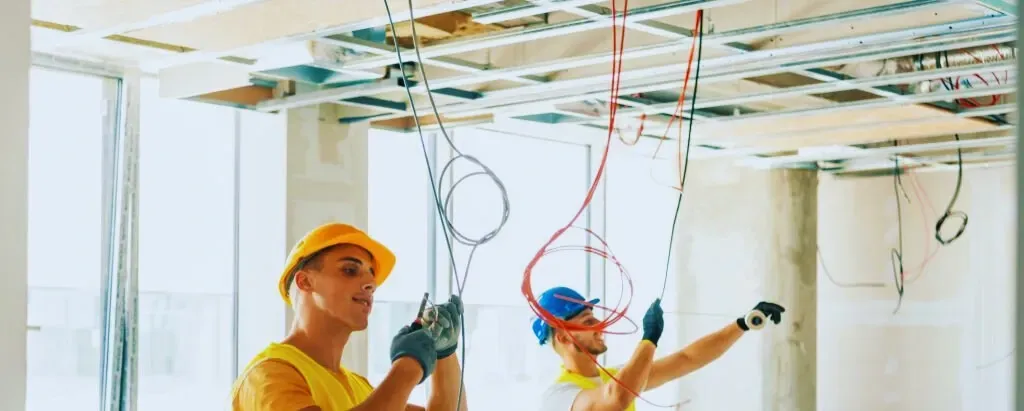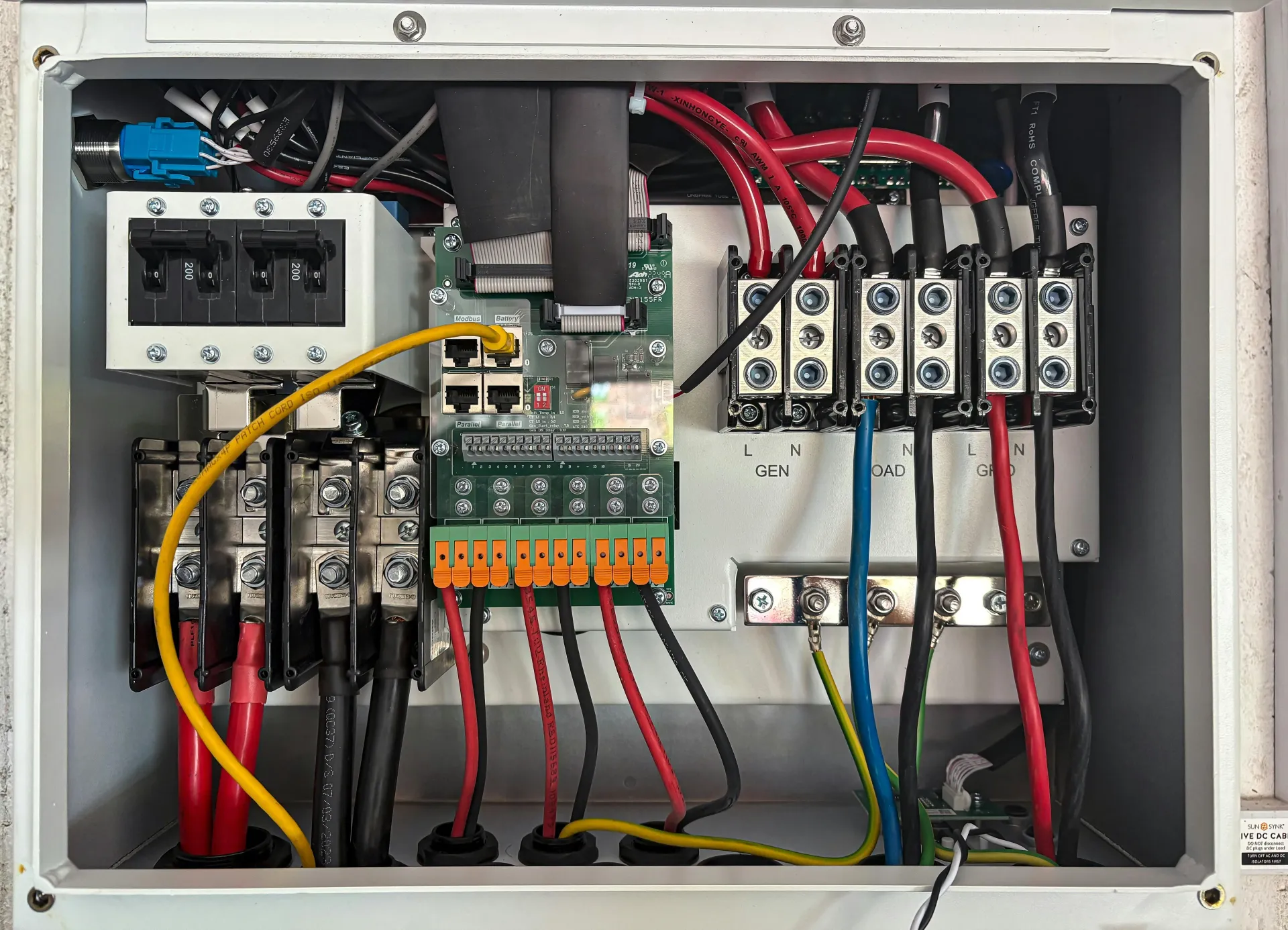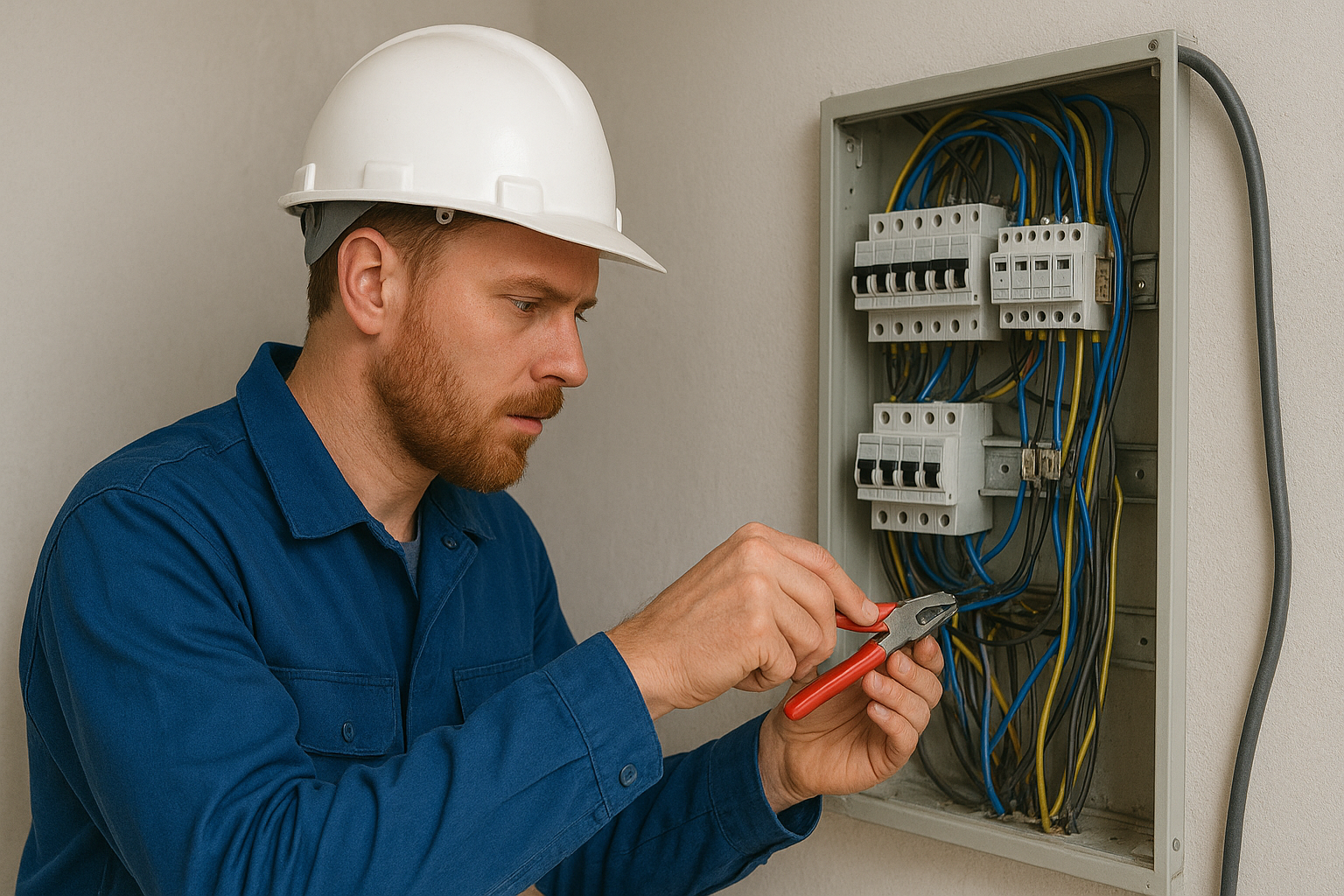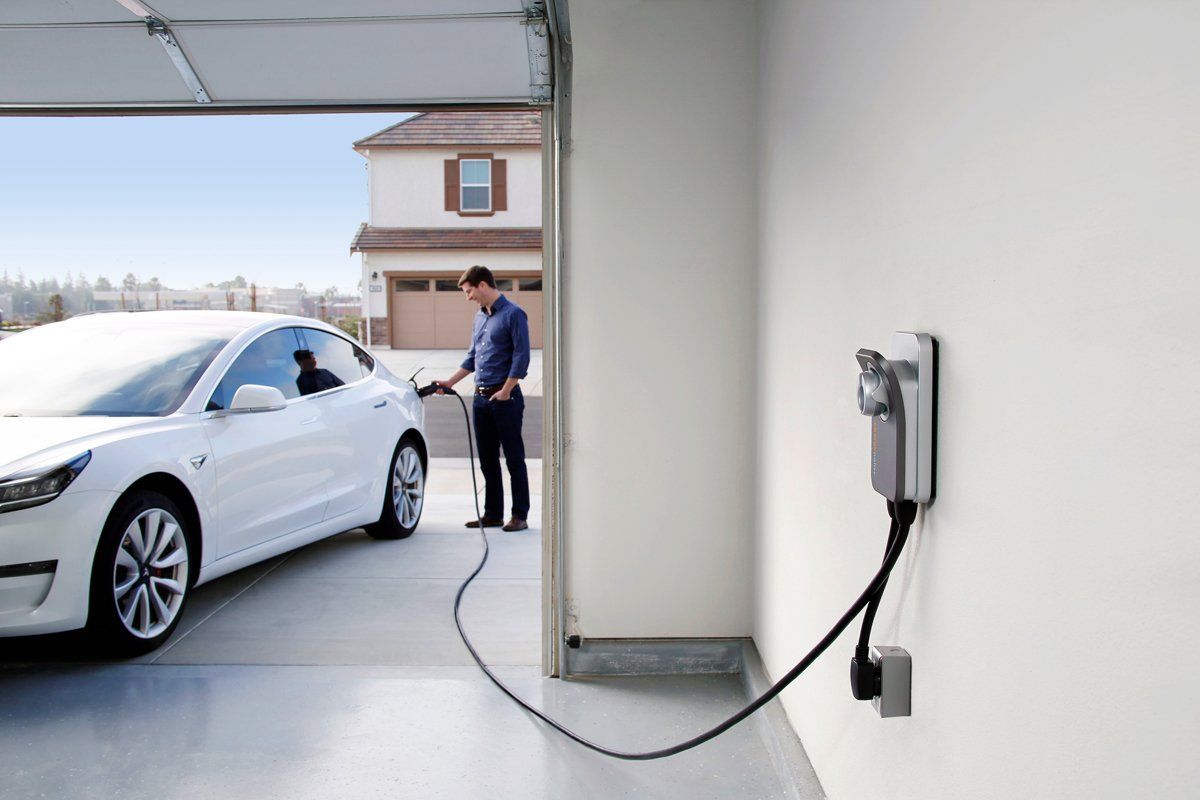Don’t Wait Until It’s Too Late: When to Replace Old Electrical Wiring
Time can be cruel to your home's most essential systems—especially the wiring that powers everything from your morning coffee to your home’s security. Over decades, electrical wiring naturally degrades, which can eventually lead to dangerous malfunctions or devastating house fires. If your home is more than 30 years old, or if you've never had a professional inspection, replacing old electrical wiring is not just a recommendation—it’s a necessity.
With the ever-growing list of electronics and devices that demand more energy than homes of the past were ever designed to handle, clinging to aging wiring is like trusting a rusty chain to hold your weight—it may snap when you least expect it.

What Is Considered “Old” Electrical Wiring?
Old wiring is typically any system installed before the 1980s. These setups often include materials like aluminum wiring or knob-and-tube systems—neither of which are equipped to handle modern electrical loads safely. The risk increases when these materials are exposed to moisture, overloading, or tampered with during renovations.
Common Warning Signs of Electrical Wiring Failure
Keep an eye out for these red flags:
- Flickering or dimming lights
- Burning smells or discolored outlets
- Frequent tripping of circuit breakers
- Buzzing sounds from outlets or switches
- Sparking when plugging in appliances
Any of these symptoms could mean your wiring is deteriorating. Don’t ignore these alerts—your home is trying to tell you something.
The Hidden Dangers Lurking in Aging Electrical Systems
Aging wiring isn’t just outdated—it’s unsafe. Brittle insulation can expose live wires, leading to short circuits or fires. According to the National Fire Protection Association, electrical malfunctions are one of the leading causes of house fires. An unseen threat, wiring problems often remain hidden inside walls, silently waiting for the perfect storm.
Why Old Wiring Is a Home Insurance Red Flag
Many insurance companies flat-out refuse to cover homes with known hazardous wiring systems. If your policy is still active, it might include disclaimers about damage caused by outdated wiring. Some providers require an inspection before renewal—making it clear that old wiring isn’t just risky; it’s potentially uninsurable.
Knob-and-Tube Wiring: Obsolete and Dangerous
Used until the 1940s, knob-and-tube wiring lacks a grounding wire and often relies on brittle insulation. While it may seem “vintage,” this system can’t keep up with today’s appliances and demands. It's a leading fire hazard and often fails to meet current building codes.
Aluminum Wiring: A Silent Threat in Modern Homes
If your home was built between 1965 and 1973, it may contain aluminum wiring. While initially a cost-effective alternative to copper, aluminum expands and contracts more than copper, loosening connections over time. This can lead to overheating, arcing, and—you guessed it—fire.
DIY Electrical Inspections: What You Can Check
Before calling a professional, you can:
- Inspect outlet plates for heat or discoloration
- Smell for burning plastic odors
- Listen for buzzing noises
- Use a voltage tester for dead zones
While these are helpful indicators, they are not a replacement for professional inspections, which go much deeper.
Professional Electrical Inspections: What They Reveal
Hiring a certified electrician reveals hidden issues through:
- Thermal imaging scans
- Voltage drop tests
- Insulation resistance checks
Ready to schedule an expert inspection? Reach out through our Contact page today.
How Often Should Wiring Be Inspected or Replaced?
Experts recommend a full inspection every 10 years for homeowners and every 5 years for rental properties. If your home has never been rewired—or you're unsure of its electrical history—it’s time to take action.
Electrical Panel Upgrades: Do You Need One Too?
Older panels can only support limited circuits and amperage—often not enough for a modern lifestyle. If your panel uses fuses or is under 100 amps, it may be time for a full electrical service upgrade. Learn more about safe modern alternatives on our Electrical Service page.
How Electrical Wiring Ages Over Time
Like any material, wires degrade. Heat, electrical loads, and even rodents contribute to deterioration. Insulation may crack or flake off, leaving wires exposed. Connections loosen, arcing begins, and safety slowly fades.
Moisture and Electrical Wiring: A Dangerous Mix
Bathrooms, basements, and kitchens are hotspots for electrical failure due to high humidity. Even “sealed” wires degrade faster when exposed to moisture, leading to potential shocks or electrical shorts.
Rodents and Wiring: A Costly Infestation Issue
Rodents chew wires to control tooth growth. This causes exposed copper, short circuits, and fires. Attics, crawl spaces, and behind walls are particularly vulnerable—inspections often reveal gnawed wires in these spots.
Do Renovations Require Wiring Updates?
Yes, often they do. New rooms or appliances mean more electrical demand. Building codes change, and during any renovation, local permits often require a wiring update to meet compliance and ensure safety.
Real Estate and Wiring: Selling a Home With Old Wiring
Buyers and home inspectors flag old wiring as a major issue. It can delay sales, lower appraisals, and become a sticking point in negotiations. Replacing outdated wiring boosts both property value and peace of mind.
Electrical Fires: How Outdated Wiring Plays a Role
Over 45,000 home fires each year are caused by electrical failure. Old, brittle wires can arc or overload circuits, causing insulation to ignite. Fire moves fast—and you won’t see it coming until it's too late.
Upgrading Outlets and Switches Alongside Wiring
New wiring should include modern outlets, especially Ground Fault Circuit Interrupters (GFCIs) in moisture-prone areas. Smart switches can also be integrated, making your home both safer and smarter.
Smart Home Compatibility and Old Wiring
Outdated wiring often lacks the grounding and capacity required for smart devices, creating functionality issues and safety risks. Modernization ensures compatibility with your home’s growing technology needs.
Energy Efficiency and Modern Wiring
New copper wiring transmits electricity more efficiently, reducing wasted energy and saving on your power bill. The efficiency adds up over time—both financially and environmentally.
Wiring and Grounding: Crucial for Safety
Proper grounding prevents shocks and damage from surges. Many older systems have little to no grounding. This deficiency puts both appliances and occupants at risk.
Is Partial Rewiring Ever a Good Idea?
If full rewiring is unaffordable, consider phasing the project. Begin with the most critical areas—kitchens, bathrooms, and bedrooms—then plan for full upgrades over time.
Permits and Local Codes for Wiring Replacement
Electrical work requires permits and city inspections to ensure compliance with safety standards. Always check with your municipality—and never hire unlicensed contractors.
Financing Your Electrical Upgrade
Home equity loans, personal loans, or local incentive programs can offset the costs of rewiring. Some utility companies offer financing or rebates for energy-efficiency upgrades.
Choosing the Right Electrician for the Job
Your electrician should be:
- Licensed and insured
- Highly reviewed
- Willing to provide references
- Experienced with rewiring projects
Always vet your professionals before hiring.
What to Expect During the Rewiring Process
The process typically involves:
- Opening walls and ceilings
- Removing old wires
- Installing new wires and outlets
- Repatching and repainting
Expect 5–10 days of active work, depending on home size and scope.
How Long Does New Wiring Last?
Modern wiring lasts 50–70 years when properly installed. Still, periodic inspections (every decade) help catch early wear and tear before issues arise.
Should You Stay Home During a Rewiring Project?
In most cases, yes—but prepare for disruptions. Power will be cut off room by room, dust will be present, and access to certain areas may be limited. For large homes, short-term relocation is often easier.
What Happens If You Don’t Replace Old Electrical Wiring?
You risk:
- House fires
- Power outages
- Appliance damage
- Insurance denial
- Legal consequences during inspections or resale
The longer you wait, the more expensive and dangerous it becomes.
Peace of Mind and Property Value from Wiring Upgrades
New wiring doesn’t just eliminate risk—it boosts your home’s market value, insurance eligibility, and energy efficiency. Think of it as investing in security and future resale success.
FAQs
What is the lifespan of electrical wiring?
Modern copper wiring can last up to 70 years, but regular inspections are essential for safety.
Can I do electrical rewiring myself?
Unless you're a licensed electrician, never attempt it. It's illegal in many places and extremely dangerous.
Is old wiring always dangerous?
Not always, but it often is. Even if it still works, it's likely not up to current safety standards.
How do I know if my home needs rewiring?
If it’s older than 30 years, has flickering lights, tripping breakers, or discolored outlets—it's time to check.
Will rewiring my home damage the walls?
Yes, some wall access is necessary. However, good electricians minimize disruption and handle patching.
Is aluminum wiring illegal?
Not illegal, but highly discouraged. Many electricians recommend replacement due to its instability.
Conclusion
Electrical systems don’t last forever. Don’t ignore the signs. Delaying repairs or replacement can lead to disaster—both personal and financial. Stay safe, stay smart, and future-proof your home by replacing old electrical wiring before it becomes an emergency.
Links:
- Electrical Service: https://www.burlesonatelectric.com/
- Contact: https://www.burlesonatelectric.com/contact











